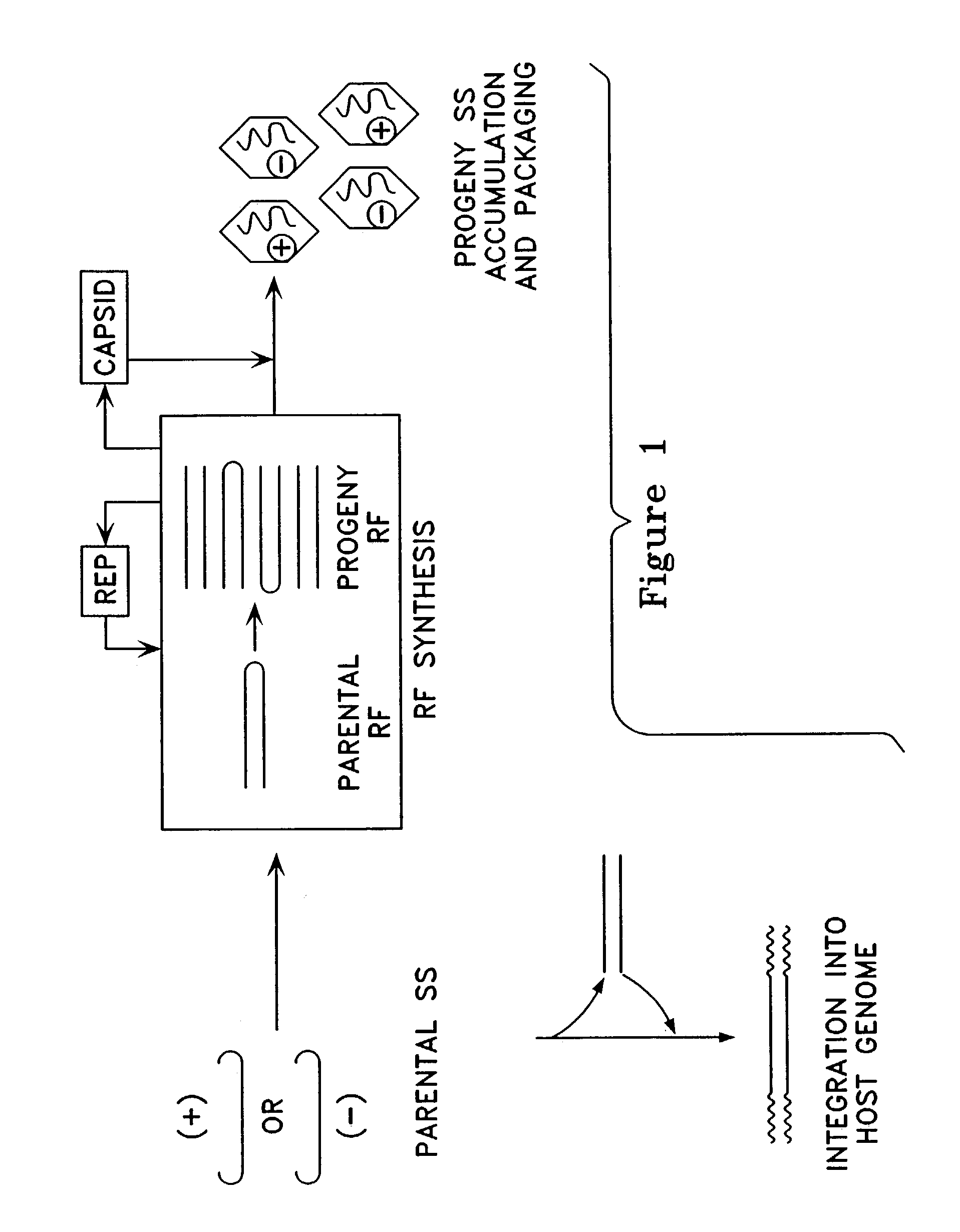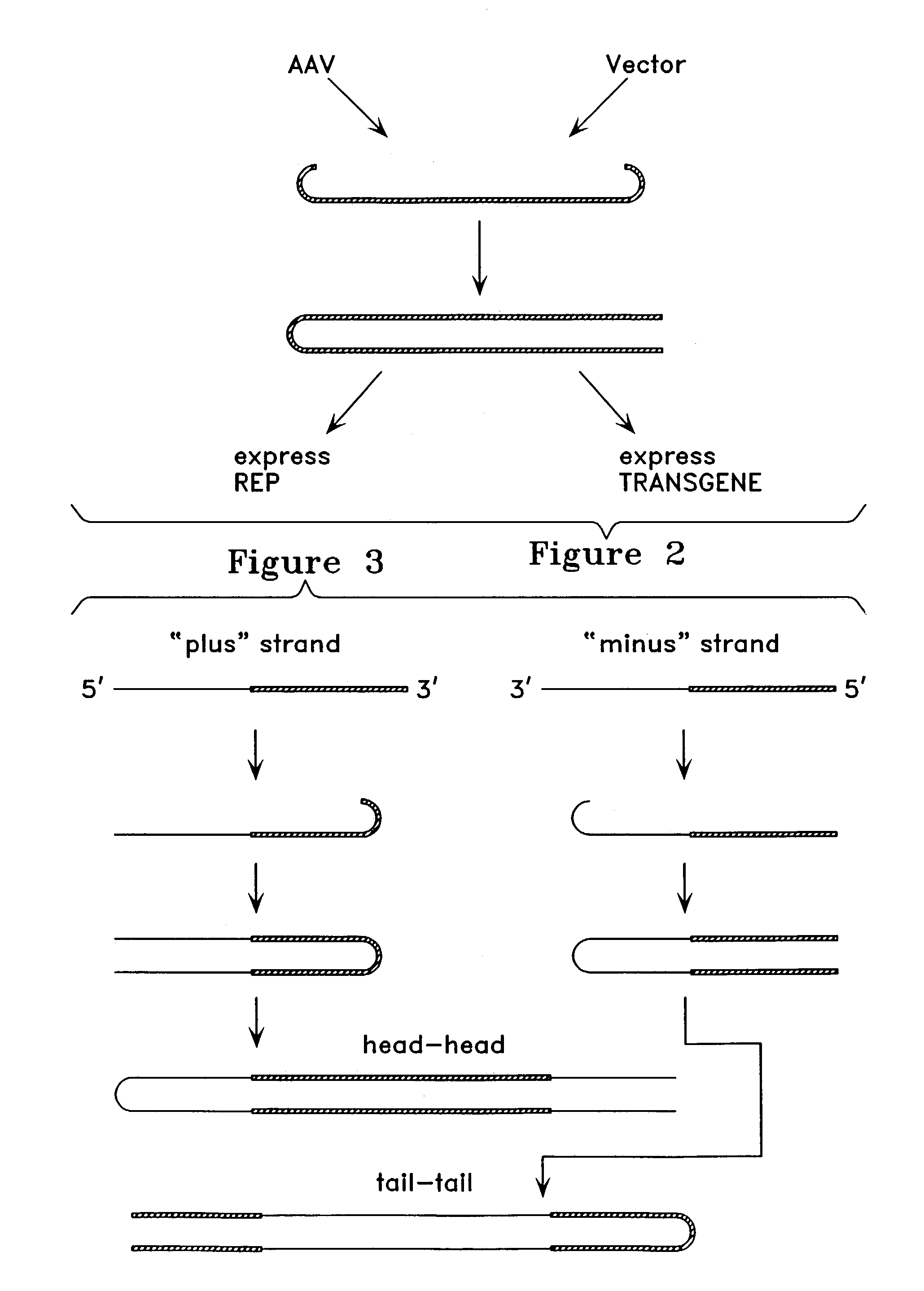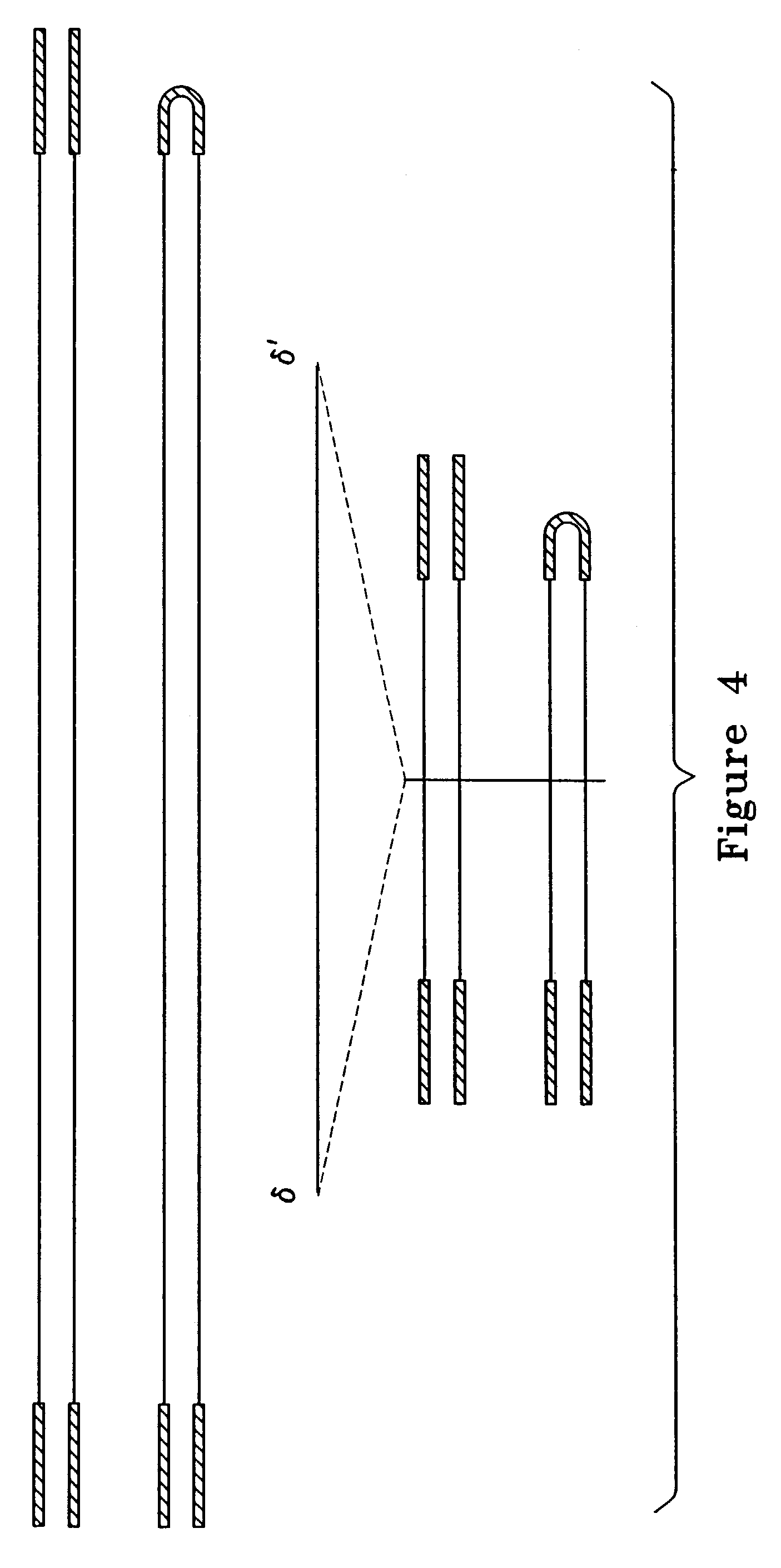Metabolically activated recombinant viral vectors and methods for their preparation and use
a recombinant, viral technology, applied in the direction of viruses, dna/rna fragmentation, fungi, etc., can solve the problems of inefficient transgene translation, inability to express transgenes at sufficient levels in various cell types, and inability to initiate expression. expression in response very slow,
- Summary
- Abstract
- Description
- Claims
- Application Information
AI Technical Summary
Benefits of technology
Problems solved by technology
Method used
Image
Examples
example 1
Construction of a Half-Size AAV Vector
[0170]An AAV vector (AAV-cmv-intron-EGFP, also known as rAAV-GFP(0.5), designed to express the GFP gene and to have a size not more that 50% of the size of an AAV genome, was constructed as shown in FIG. 5. A NheI to SalI fragment from pEGFP-C1 (Clontech), containing EGFP (FIG. 5C), was ligated to the large NheI to SalI fragment obtained from plasmid pCI (Promega, FIG. 5B). The resulting plasmid construct was then digested with BglII and SmaI, filled in using nucleoside triphosphates and T4 DNA polymerase (FIG. 5D), and ligated to a XhoI to SpeI fragment from AAV-syn pA (FIG. 5A), which had been filled in using T4 DNA polymerase. The final construct (FIG. 5E) is 2265 base pairs from the start of the 5′ ITR to the end of the 3′ ITR.
example 2
Construction of Full-Size AAV Vectors
[0171]Two full-size AAV vectors, designed to express the GFP gene and to have a size approximately equivalent to the size of an AAV genome, were constructed as shown in FIG. 6.
[0172]The first full size vector (Sal-AAV-cmv-intron-EGFP, also known as rAAV-GFP(Sal)), was constructed by ligating a 2.3 kb HindIII fragment of lambda phage DNA (filled in using nucleoside triphosphates and T4 DNA polymerase, FIG. 6B) to the half-size vector described in example 1, that had been digested with SalI and filled-in with T4 DNA polymerase (FIG. 6A). The final full-size Sal-AAV-cmv-intron-EGFP construct (FIG. 6C) is 4587 nucleotides long from the start of the 5′ ITR to the end of the 3′ ITR.
[0173]The other full-size vector (Cla-AAV-cmv-intron-EGFP, also known as rAAV-GFP(Cla)) was constructed by ligating a 2.3 kb ClaI fragment (obtained from lambda phage DNA by PCR, FIG. 6E)) to the vector described in Example 1 that had been digested with ClaI (FIG. 6D). The f...
example 3
Analysis of Expression from Half-Size and Full Size Vector Plasmids
[0175]The half-size and full-size plasmids, described in the previous examples, were used to transfect human 293 and HeLa cells to assess the level of expression of the GFP protein obtained from each construct. Expression levels from the AAV constructs were compared to the level obtained after transfection of the plasmid EGFP-C1 (FIG. 5C). Equimolar amounts of each plasmid were introduced into each cell line, and, at 48 hr after transfection, the amount of GFP expression was assessed by analysis in a flow cytometer. Results are shown in Table 1.
[0176]
TABLE 1Analysis of expression from vector plasmidsCellDNA amountfluorescent% oftypeconstruct(equimolar)cells (%)Parental293AEGFP-C11.0 μg94100(parental)293AAAV-GFP1.0 μg92981 / 2 size293AAAV-GFP1.0 μg8186full size-Cla293AAAV-GFP1.0 μg8995full size-Sal293AEGFP-C10.3 μg86100(parental)293AAAV-GFP0.3 μg83971 / 2 size293AAAV-GFP0.3 μg5969full size-Cla293AAAV-GFP0.3 μg8295full siz...
PUM
| Property | Measurement | Unit |
|---|---|---|
| δ | aaaaa | aaaaa |
| density | aaaaa | aaaaa |
| density | aaaaa | aaaaa |
Abstract
Description
Claims
Application Information
 Login to View More
Login to View More - R&D
- Intellectual Property
- Life Sciences
- Materials
- Tech Scout
- Unparalleled Data Quality
- Higher Quality Content
- 60% Fewer Hallucinations
Browse by: Latest US Patents, China's latest patents, Technical Efficacy Thesaurus, Application Domain, Technology Topic, Popular Technical Reports.
© 2025 PatSnap. All rights reserved.Legal|Privacy policy|Modern Slavery Act Transparency Statement|Sitemap|About US| Contact US: help@patsnap.com



